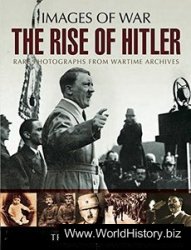After 1940, the educational system was increasingly seen as the key to economic development, not as a vehicle for instilling new values in students. In 1946, Article 3 of the constitution was amended to state that education should stimulate “love of country and international solidarity.” The reference to “socialism” was deleted from the article.205
Even though the overt political messages were dropped, schools continued to foster change. This was especially true of female students. As corn-grinding mills, sewing machines, store-bought utensils, and water sources close to home were introduced, girls had more time to attend school.
As it became apparent that schooling increased the productive capacity of family members both on and off the farm, parents became increasingly willing to permit rural girls to attend school. Anthropologist Robert Redfield felt education was the key to the changes he observed after 1931 in the village of Chan Kom, Yucatan. He commented on the young women who had attended school there: “She speaks up when spoken to and has not the shy, almost voiceless and completely unassertive manner which prevailed among young women in former generations.”206
After 1950, due to population increase, a tidal wave hit the educational system. The number of Mexican children attending elementary school increased from 2.7 million in 1950 to 4.9 million in 1960 and then to 8.5 million in 1970. At the same time, with increased prosperity, many children could afford to stay in school longer. As a result, while primary enrollment increased by 3.7 percent a year between 1950 and 1970, secondary enrollment increased by 16.9 percent a year. In response to increased enrollments, the education budget rose from 7.8 percent of federal spending under Aleman (1946—1952) to 13.2 percent under Diaz Ordaz (1964—1970). Even with increased budgets, new enrollments strained the system. The average number of children per classroom increased from forty-five during the Diaz Ordaz administration (1964—1970) to fifty-three during the Echeverria administration (1970—1976).207
Between 1940 and 1970, as a result of both adult literacy programs and the increased education of children, the percentage of illiterates in the population decreased from 58 to 28. However, given the huge population increase, the number of illiterates rose from 9.5 million to 10.9 million during this same period. The workforce continued to reflect past limitations on educational opportunity. In 1970, 67 percent of the population over twenty-four had three years or less of formal education and only 9 percent had attended secondary school.208
Despite prodigious efforts to educate all children, many left the school system at each level. The following enrollment figures indicate how enrollment declined at each successive level:
1,823,765 students entered primary school in 1958, of whom
387,533 passed sixth grade in 1963, of whom 146,058 passed ninth grade in 1966, of whom 58,332 enrolled in college in 1969.209
In many ways, the educational system reinforced existing social inequality. In 1970, rural Mexico, home to the majority of Mexico’s poor, accounted for 42 percent of the school-age population but only 9 percent of those finishing primary school. Government allocation of resources reinforced rural poverty. In rural areas, 74 percent of schools offered only grades one to four. Money and the best teachers flowed to areas that already had above average income.210
There was a very close, circular relation between education and poverty. In families classified as poor, 47.7 percent of family heads had no formal education and only 2.8 percent had continued beyond elementary school. Since children in these families could not afford to remain in school for long, they formed another poorly educated generation on its way to poverty.211
In the early 1950s, the National University moved to a new campus on the southern fringes of Mexico City. The new campus, whose buildings were decorated with mosaics and frescos by David Alfaro Siqueiros, Diego Rivera, and Juan O’Gorman, boasted some of the finest examples of modern architecture anywhere. An imposing statue of President Aleman towered over the grounds of the campus whose creation he had ordered.212
The National University entered its golden age after moving to the new campus. Its graduates dominated Mexico’s cultural, political, and entrepreneurial elite. Alliances made while on campus served politicians and bureaucrats as they moved up the political ladder. All Mexican presidents from Aleman (1946—1952) through Salinas (1988—1994) were graduates of the National University.213

Figure 21.4 National University Library, with mural by Juan O'Gorman. Statue of President Aleman stands to left
Source: Reproduced courtesy of the Benson Latin American Collection, the University of Texas at Austin
The National University experienced the same accelerated growth that lower levels of the educational system did. Between 1950 and 1970 its enrollment increased from 24,929 students to 106,038.214
While the National University continued to dominate higher education, other institutions were founded, laying the groundwork for the diversification of higher education. The Colegio de Mexico, which was formalized in 1940, specialized in the social sciences and history and benefited from Spanish refugees on its faculty and funds from the Rockefeller Foundation. To this day this unique public-private hybrid produces outstanding works on Mexico (including sixty-one cited in this book). In 1943, to ensure a continued supply of technicians for Garza-Sada enterprises, Eugenio Garza Sada, a second-generation member of the Monterrey elite, spearheaded the creation of the Monterrey Institute of Technology. It became a highly regarded technical training center modeled on MIT, of which Garza Sada was an alumnus.
By 1960, twenty-two state universities had been established. As a result of these new campuses, total enrollment in higher education rose from 29,892 in 1950 to 252,200 in 1970—71. Between 1960 and 1970, the number of degrees granted by universities rose by 12.4 percent a year. A college degree, which had been the key to upward mobility in the 1950s, became a source of discontent in the 1960s, as the number of college graduates exceeded the number of professional jobs being created.215
Even though university enrollment was increasing faster than the population as a whole, access to higher education remained sharply tilted toward economically and geographically privileged males.
The average family income of National University students was 3.2 times the national average. In 1963, only 17 percent of those enrolled in higher education were women. The next year, a survey found that only 18 percent of National University students had a worker or peasant background. As was the case with so many aspects of Mexican life, the Federal District was over-represented. The National University and the National Polytechnic Institute, founded in Mexico City by Cardenas to provide technicians sympathetic to his development goals, together accounted for 49 percent of the university students in Mexico. As political scientist Soledad Loaeza commented in 1984, “Despite the undeniable expansion of educational services during the last 40 years, access to secondary and higher education continues to be reserved for a very small fraction of Mexican society.”216




 World History
World History









